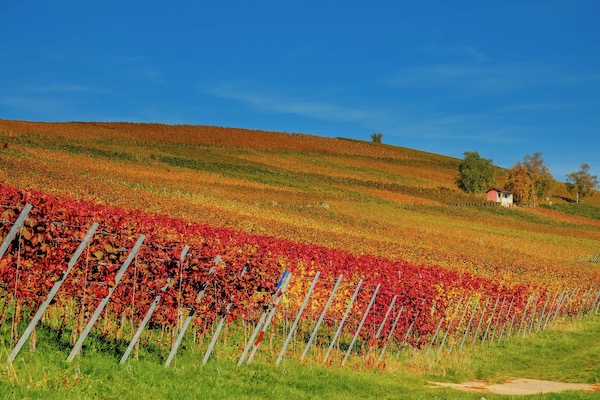
Germany
Nahe
The wine-growing region on the Nahe and the tributaries Glan and Alsenz has 2,000 years of wine-making tradition. Protection against cold winds by the high Hunsrück, mild temperatures and lots of sunshine create an excellent climate for winegrowing in this sunny valley with low-rain. Although the Nahe is one of the smaller German wine regions, its extraordinary range of soil types is second to none. This is because of its turbulent geological history. For this reason, the region is able to grow a range of varieties and produce a large diversity of wine styles.
The steeper sites of volcanic or weathered stone, and those with red, clayish slate seem predestined for elegant, piquant Riesling wines of great finesse and a light spiciness. More than a quarter of the vineyard area of 4239 hectares is planted with it. Flatter sites of loam, loess and sandy soils yield lighter, fragrant Müller-Thurgau (Rivaner) wines with a flowery note, whilst Silvaner thrives in a number of soils and produces full-bodied, earthy wines. Pinot Gris and Blanc are being increasingly cultivated. Dornfelder and Pinot Noir also find a good home here.
Geographical location: In the Hunsrück Hills between the Rhine and Mosel valleys. Vineyards are on or near the banks of the Nahe River and its tributaries, the Glan and the Alsenz, as well as the streams north and west of Bad Kreuznach (Gräfenbach, Guldenbach, Trollbach and Ellerbach).
Major town(s): Bad Kreuznach, Bad Münster am Stein-Ebernburg, Bad Sobernheim
Climate: Mild and balanced, with little frost
Soil types: The entire rock cycle of igneous (volcanic), sedimentary (sandstone, clay, limestone) and metamorphic (slate) rocks is present in the Nahe.
Vineyard area 2019: 4,239 ha · 1 district · 7 collective vineyard sites · 300+ individual sites
Grape varieties 2019 [white 76.2% · red 23.8%] : Riesling (29%), Müller-Thurgau (12%), Pinot Gris (8.2%), Pinot Blanc (7.4%) as well as Dornfelder (9.7%) and Spätburgunder (6.7%)
